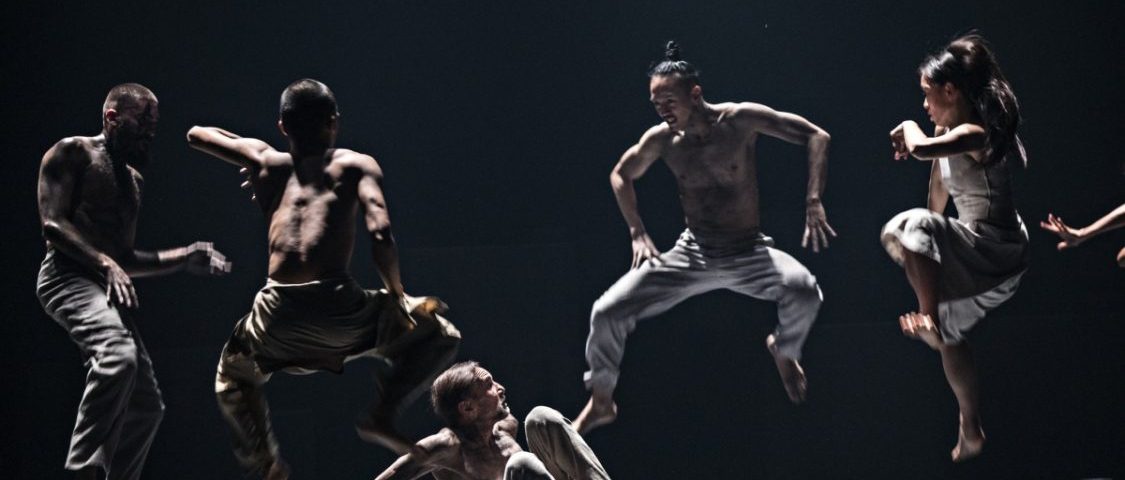The Akram Khan Company returns to Sadler’s Wells with a season of works, both old and new, under the umbrella title ‘Carnival of Shadows’. First up is ‘Outwitting the Devil’, premiered in Stuttgart a couple of years ago before the pandemic, but not yet seen in this country. It is an ensemble piece for six dancers, four men and two women, that takes its departure from this choreographer’s staple concerns. Khan’s training in the ‘kathak’, narrative-focused, tradition of Indian dance joins forces with contemporary western dance technique to propel a story forward within the creative vehicle of a uniquely expressive gestural language. As so often, the framework is set within a familiar myth of universal import which is deployed to offer a commentary on our contemporary concerns as well.
In this case the myth in question is the Epic of Gilgamesh in which the destruction of a cedar forest leads to the gods punishing Gilgamesh through killing his best friend which in turn compels him to undergo a quest to search for the meaning of eternal life and true self-knowledge. A voiceover at the start and towards the end of the evening intones (in French) elements of the story, together with repeated references to animals and ‘homme’ – man – as a way of indicating humanity’s destructive relationship to the environment.
While the programme notes relate this treatment of the myth to the challenge of climate challenge it is harder to see this narrative line in the sequencing of the choreography. In a series of group and solo episodes the dancers create some remarkably poetic shapes with a dazzling technical facility. However, it is harder to relate the poised, taut sculptural beauty of the tableaus evoked in the choreography to the internal development of the myth or any contemporary parallels. Instead, the audience is left to derive its own meaning from this powerfully expressive dance language.
Without the tight correlation of story to dance that is usual with this company the emotional impact, while still strong, begins to fade after an hour and you are left thinking the piece could be made more concise to advantage. That said, there are many remarkable highlights along the way, notably a duo between two of the male dancers, one in pursuit of the other, which crystallises the theme of the cruel taming and interference of man with uninhibited nature. And another powerful statement was the inclusion of a much older dancer whose more aged physique and restrained physical deportment contrasted effectively with the restless energy of the others. This is perhaps revealing of a future direction and emphasis within Akram Khan’s work as his own dance career winds down and he reflects on the contribution that older dancers can still make in performance.
The brooding lighting design by Aideen Malone deserves praise for the way it intensified the atmosphere of conflict, strain, and stress within the bodies of the dancers and spot lit key moments of anguish or repose – a ‘carnival of shadows’ indeed! The set was minimalist with only a scatter of black bricks on the forestage and some higher levels at the rear. Finally, a word about the sinister electronic score, which used step motifs to good effect to screw up the tension, though the amplification seemed unnecessarily loud when the dance moves were so eloquent in their own right.

